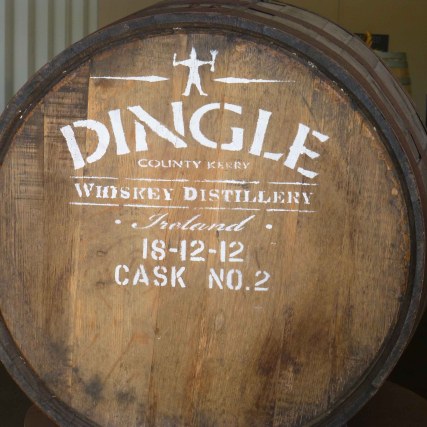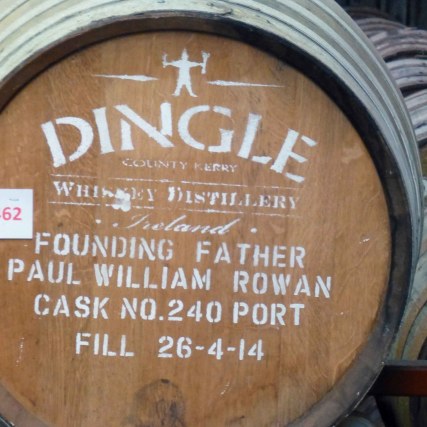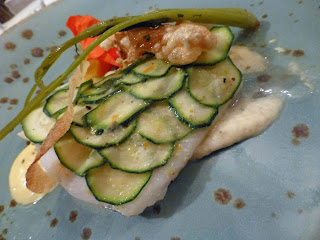Dingle Diary. Blas and the Festival
 |
| The Supreme Champion |
Massive crowds attended the Dingle Food Festival (1st and 2nd ofOctober) but it was much quieter in the town when I arrived on the previous Thursday morning, just one of the dozens of judges gathering in the Skellig Dingle for the Blas 2016 judging. A record 2,500 products were entered and these had been whittled down to manageable numbers.
Still there was a lot of tasting to do - from about 11.30 until around 8.30 pm in my case. We finished up in Dick Mack’s pub in Green Street for the alcohol tastings. The pub is well worth a visit in its own right, just to see the huge whiskey selection alone!
 |
| One of Dingle's little cafes |
Then it was down to O’Flaherty’s Pub for a proper drink and a proper bite. There was a great buzz here, particularly when the music started. Dingle Gin and Tom Crean lager was flying but I delayed turning to those until myself and my new buddy Johnny had cleaned out the Beal Bán from the West Kerry Brewery!
 |
| On the Taste Trail |
The next day, Friday, was more or less at leisure and we did a trip around the peninsula (post to follow). That evening though, the Blas judges assembled in the Oceanworld Aquarium where candles lit the scene as the various fish, the shark and the turtle swam around and we gathered for more Dingle Gin and more Tom Crean and, yes, fish and chips!
 |
| A Gold winner. For a full list of winners, please click here |
And then Blas chairman and founder Artie Clifford introduced local adventurer Mike O’Shea who gave us an illustrated talk on his life, concentrating mainly on last year’s trip to South Georgia to retrace part of Tom Crean’s footsteps. Very interesting indeed, even the penguins behind seemed to stay still, though there were some strange noises off stage! Check out more of Mike’s amazing adventures here.
Saturday was the first full day of the Dingle Food Festival and the town was transformed as thousands of visitors arrived, sauntering through the closed streets to sample the food and drink on offer at every step. A huge market covered a few of the streets and then there was the Taste Trail with close to 80 offerings, some very inventive bites indeed. Besides there were craft workshops, demonstrations by top chefs, a farmers forum, special lunches and dinners and so much more, even a visit to the distillery for us.
 |
| Pesto winners: Gold (left) and Bronze |
Time too for the Blas judges to visit the producers and see the products (now in their packaging). It was an anxious time for the Blas entrants as the awards were announced throughout the day. I had a lot of sympathy for the entrants in Spirits and Liqueurs, Beers, Ales, Lagers, Stouts and Cider as these were last on the list, scheduled for 5.00pm. A long wait!
At least they could relax on the Sunday as Blas had been put to bed for another year and the sun shone as the Food Festival, again mightily well supported, continued for another day. Well done Dingle! Again.
 |
| Lots of talk about this Gold winner! |
 |
| Sampling at the street market |
Driving the Dingle peninsula







 On the 18th of December 2012, a week before Christmas, the Dingle Distillery started making whiskey. You may well see the results around this Christmas, as the whiskey has now served more than the necessary three years and one day in 700 litre capacity oak barrels. The period time, the oak and the barrel size are all mandatory, we were told on a tour during last weekend’s Dingle Food Festival.
On the 18th of December 2012, a week before Christmas, the Dingle Distillery started making whiskey. You may well see the results around this Christmas, as the whiskey has now served more than the necessary three years and one day in 700 litre capacity oak barrels. The period time, the oak and the barrel size are all mandatory, we were told on a tour during last weekend’s Dingle Food Festival.

























